
|

 Human – computer interactions occur within sociocultural and sociostructural contexts, a notion that has sparked research and theory that strives to account for the social role of technology within the workplace and other arenas of society (Bandura, 2002). “Informatics is contextual by nature, entangled with the work done to gather it. There is a co-evolution of the environment and the system, the technology, work and clinicians are interwoven agents of change. Technology is physically constructed by actors working in a given social context” (Kaplan, 2001, p. 47). Some theorists view technologies as having agency (the capacity to make a difference) as they are acted upon by humans within the workplace or other social milieu. Others theorize that technologies gain agency
Human – computer interactions occur within sociocultural and sociostructural contexts, a notion that has sparked research and theory that strives to account for the social role of technology within the workplace and other arenas of society (Bandura, 2002). “Informatics is contextual by nature, entangled with the work done to gather it. There is a co-evolution of the environment and the system, the technology, work and clinicians are interwoven agents of change. Technology is physically constructed by actors working in a given social context” (Kaplan, 2001, p. 47). Some theorists view technologies as having agency (the capacity to make a difference) as they are acted upon by humans within the workplace or other social milieu. Others theorize that technologies gain agency in their own right, which is constituted as a non-human agent within the social landscape. “Technologies, like people, are now conceived of as having agency, biographies, lives, lifecourses, histories, language, idiosyncratic quirks, inclinations, and known propensities for perverse or benign behavior” (Barnard & Sandelowski, 2001, p. 368). This type of theorizing has led to perspectives such as actor-network theory, diagnostic and therapeutic agency, and agent technology. Each of these perspectives influence the shaping of nursing informatics and have current as well as future implications for the profession of nursing and the provision of nursing care. in their own right, which is constituted as a non-human agent within the social landscape. “Technologies, like people, are now conceived of as having agency, biographies, lives, lifecourses, histories, language, idiosyncratic quirks, inclinations, and known propensities for perverse or benign behavior” (Barnard & Sandelowski, 2001, p. 368). This type of theorizing has led to perspectives such as actor-network theory, diagnostic and therapeutic agency, and agent technology. Each of these perspectives influence the shaping of nursing informatics and have current as well as future implications for the profession of nursing and the provision of nursing care.
Human agency is often motivated by personal and collective efficiency. “By acting on their efficacy beliefs, people ply the enabling functions of electronic systems to promote their education, health, affective well-being, work-life, organizational innovativeness and productivity and to change social conditions that affect their lives.  Technology influences, and is influenced by, the sociostructural nature of societies” (Bandura, 2002, p. 2). Advances in technology have catalyzed a shift from the industrial to the information age and birthed our current knowledge-based global society, at least in western capitalistic society. To adapt to this shift, human agency has accepted the need for continual self-development and self-renewal, often through the context of lifelong learning. Key to this renewal is the promise of new technologies which bring knowledge to the fingertips of any human who has access to a computer and the Internet. In this context, the characteristics of access and the promise of knowledge gives technology agency, in that it can and does make a difference in people's (including nurses) lives on a number of levels. Technology influences, and is influenced by, the sociostructural nature of societies” (Bandura, 2002, p. 2). Advances in technology have catalyzed a shift from the industrial to the information age and birthed our current knowledge-based global society, at least in western capitalistic society. To adapt to this shift, human agency has accepted the need for continual self-development and self-renewal, often through the context of lifelong learning. Key to this renewal is the promise of new technologies which bring knowledge to the fingertips of any human who has access to a computer and the Internet. In this context, the characteristics of access and the promise of knowledge gives technology agency, in that it can and does make a difference in people's (including nurses) lives on a number of levels.
The Actor Network Arena
 The question of whether technology has agency has been the focus of social research for at least three decades. According to structuration theory, only humans have agency while technologies are simply allocative resources that influence society only when they are incorporated in structuration processes (Giddens, 1984). Giddens theorized that only human actors had agency or transformative capacity, which was closely connected with a sense of power, manifested as an exploitation of resources. “Resources....are structured properties of social systems, drawn on and reproduced by knowledgeable agents in the course of interaction” (p.15). Thus, technologies possess structural properties which serve and are used by human agents as resources in social practices. The question of whether technology has agency has been the focus of social research for at least three decades. According to structuration theory, only humans have agency while technologies are simply allocative resources that influence society only when they are incorporated in structuration processes (Giddens, 1984). Giddens theorized that only human actors had agency or transformative capacity, which was closely connected with a sense of power, manifested as an exploitation of resources. “Resources....are structured properties of social systems, drawn on and reproduced by knowledgeable agents in the course of interaction” (p.15). Thus, technologies possess structural properties which serve and are used by human agents as resources in social practices.
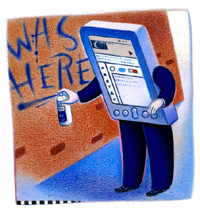 On the other hand, Bruno Latour (1987) coined the term 'actant' to describe the potential for agency in non-human artifacts. “While the status of material artifacts in Actor Network Theory is somewhat ambiguous, Latour's discussion of the agency of key fobs, door closers, and speed bumps (Latour, 1991) suggests a concept of agency that is not restricted to human actors” (Rose & Jones, 2005, p. 20). Latour viewed the intertwined actions that result when humans utilize technologies as a symmetrical network of actors that work together and influence each other: in essence, he seemed to view technologies and other material objects through the lens of hylozoism, where technology possesses the attributes of intentionality, will, purpose, and some sort of life of their own. On the other hand, Bruno Latour (1987) coined the term 'actant' to describe the potential for agency in non-human artifacts. “While the status of material artifacts in Actor Network Theory is somewhat ambiguous, Latour's discussion of the agency of key fobs, door closers, and speed bumps (Latour, 1991) suggests a concept of agency that is not restricted to human actors” (Rose & Jones, 2005, p. 20). Latour viewed the intertwined actions that result when humans utilize technologies as a symmetrical network of actors that work together and influence each other: in essence, he seemed to view technologies and other material objects through the lens of hylozoism, where technology possesses the attributes of intentionality, will, purpose, and some sort of life of their own. 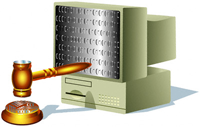 “It is the extent to which humans behave 'as if' machines had autonomy and intentionality that is significant in understanding the interactions of humans and machines, rather than some objectively determined agency (even if this could be established). Moreover, as machines become more complex, their perceived autonomy increases. The mutual transformation of human and machine agency that emerges through their interplay, influences social practice through changes in the perceptions of social actors. Human agents have purposes and forms of awareness that machines do not. The two kinds of agency are not separate, but intertwined, and their consequences emergent” (Rose & Jones, 2005, p. 27). “It is the extent to which humans behave 'as if' machines had autonomy and intentionality that is significant in understanding the interactions of humans and machines, rather than some objectively determined agency (even if this could be established). Moreover, as machines become more complex, their perceived autonomy increases. The mutual transformation of human and machine agency that emerges through their interplay, influences social practice through changes in the perceptions of social actors. Human agents have purposes and forms of awareness that machines do not. The two kinds of agency are not separate, but intertwined, and their consequences emergent” (Rose & Jones, 2005, p. 27).
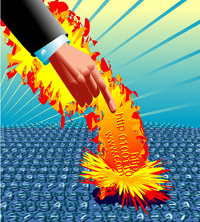 A key tenet of actor-network theory is the acknowledgment of the importance of situated context. Nurses and technology interact within the context of bureaucratic health care, often in the presence of their clients or other health professionals. These interactions culminate in “emergent networks that make work practices function smoothly” (Kaplan, 2001, p. 47) within “...dynamic, emergent processes, [where] causality is multi-directional” (p. 48). “In contemporary social studies of science and technology, the actor-network view of humans and nonhumans as analytically (as opposed to morally) similar, and its emphasis on acts, not actors, contrasts with dualistic and deterministic accounts of technology as alien to human beings and as stable causes of effects. A key tenet of actor-network theory is the acknowledgment of the importance of situated context. Nurses and technology interact within the context of bureaucratic health care, often in the presence of their clients or other health professionals. These interactions culminate in “emergent networks that make work practices function smoothly” (Kaplan, 2001, p. 47) within “...dynamic, emergent processes, [where] causality is multi-directional” (p. 48). “In contemporary social studies of science and technology, the actor-network view of humans and nonhumans as analytically (as opposed to morally) similar, and its emphasis on acts, not actors, contrasts with dualistic and deterministic accounts of technology as alien to human beings and as stable causes of effects. 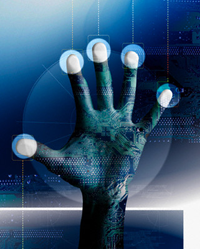 Technologies, like people, simultaneously act, but are also 'acted upon'” (Barnard & Sandelowski, 2001, p. 369) where “...machines, tools, procedures, and protocols are agents of use and are physically and philosophically independent of human action and choice” (Barnard, 1997, p. 127).
This particular perspective of informatics presents technology as a critical actor within the social context of the health system, an actor that “cannot be understood without examining contextual factors relevant to the particular society, such as gender, class, economics, culture or race. Within this context, a series of historical actors with an investment in the system make choices about the function, form, or use of a particular technology, and these choices themselves reflect the social context” (Fairman & D'Antonio, 1999, p. 180). “When machines act they can be seen as tools (where they act directly under the control of humans to amplify their capacity to make a difference), as proxies (where they replace humans and act in their stead), or as automata (where they take over some (usually minor) part of human decision making as well as the power to act). Modern organizational computer systems can serve all three functions” (Rose & Jones, 2005, p. 28). Technologies, like people, simultaneously act, but are also 'acted upon'” (Barnard & Sandelowski, 2001, p. 369) where “...machines, tools, procedures, and protocols are agents of use and are physically and philosophically independent of human action and choice” (Barnard, 1997, p. 127).
This particular perspective of informatics presents technology as a critical actor within the social context of the health system, an actor that “cannot be understood without examining contextual factors relevant to the particular society, such as gender, class, economics, culture or race. Within this context, a series of historical actors with an investment in the system make choices about the function, form, or use of a particular technology, and these choices themselves reflect the social context” (Fairman & D'Antonio, 1999, p. 180). “When machines act they can be seen as tools (where they act directly under the control of humans to amplify their capacity to make a difference), as proxies (where they replace humans and act in their stead), or as automata (where they take over some (usually minor) part of human decision making as well as the power to act). Modern organizational computer systems can serve all three functions” (Rose & Jones, 2005, p. 28).
Diagnostic and Therapeutic Agency
 Technologies in nursing are often used for either diagnostic or therapeutic purposes. If one looks at these activities through the lens of agency, these instruments prove to be more than mere tools or objects that promote efficiency and reduce human error. They become both actor in the form of helping the nurse gather diagnostic data, such as a client's vital signs, and symbols that represent the work that nurses perform in practice. “The potential and power of a technological device to shape an interaction is not pregiven but is realised in practice, e.g. A stethoscope is an instrument of diagnosis, an extension of the ear, a symbol of science, and a bid to a higher social status” (Barnard & Sandelowski, 2001, p. 369). Technologies in nursing are often used for either diagnostic or therapeutic purposes. If one looks at these activities through the lens of agency, these instruments prove to be more than mere tools or objects that promote efficiency and reduce human error. They become both actor in the form of helping the nurse gather diagnostic data, such as a client's vital signs, and symbols that represent the work that nurses perform in practice. “The potential and power of a technological device to shape an interaction is not pregiven but is realised in practice, e.g. A stethoscope is an instrument of diagnosis, an extension of the ear, a symbol of science, and a bid to a higher social status” (Barnard & Sandelowski, 2001, p. 369).  It is in the pathic and caring use of such instruments, that nursing engages the client within the network formed by nurse and technology (in this case, the stethoscope). Through the agency of the stethoscope, deep invisible activity (pulse, respiration rate and rhythm, bowel sounds, and so on) within the client are revealed, measured, and recorded. It is in the pathic and caring use of such instruments, that nursing engages the client within the network formed by nurse and technology (in this case, the stethoscope). Through the agency of the stethoscope, deep invisible activity (pulse, respiration rate and rhythm, bowel sounds, and so on) within the client are revealed, measured, and recorded.
More sophisticated technologies go even further. “Technologies foster personhood and further humane caring.  Xrays, etc. offer visual objectification of the body and often sustained patient's subjectivity by helping them to legitimate their suffering. By offering these patients, who had nothing to show for their pain, visual proof of its cause, visual technologies conferred them the power of the visible in a culture that increasingly defines the real as the seen” (Barnard & Sandelowski, 2001, p. 370). Even in end of life situations, technology can be viewed as exhibiting therapeutic agency. “Resuscitation technology served as a cultural ritual facilitating the passage from life to death. By providing an opportunity to prepare for impending death, the technology naturalized and dignified death” (Barnard & Sandelowski, 2001, p. 371). Xrays, etc. offer visual objectification of the body and often sustained patient's subjectivity by helping them to legitimate their suffering. By offering these patients, who had nothing to show for their pain, visual proof of its cause, visual technologies conferred them the power of the visible in a culture that increasingly defines the real as the seen” (Barnard & Sandelowski, 2001, p. 370). Even in end of life situations, technology can be viewed as exhibiting therapeutic agency. “Resuscitation technology served as a cultural ritual facilitating the passage from life to death. By providing an opportunity to prepare for impending death, the technology naturalized and dignified death” (Barnard & Sandelowski, 2001, p. 371).
As new technologies such as tele-nursing and virtual assessment emerge, the arena for actor network encounters between nurses and technology widens and becomes more complex.  Although physical connection is absent, the nurse is able to visualize and communicate with the client, and suggest diagnostic and therapeutic activities through the means of sophisticated ICTs. “The resurrection of the fleshy body in nursing, the simultaneous transformation of the body into information, and the new turn in medicine and nursing toward encountering patients in virtual environments of care challenge nurses once again to address the tension between touch-body and technology-information as paradigms for nursing care and the paradox of visibility that advances in technologically - enhanced visibility pose for nursing” (Sandelowski, 2002, p. 63). Instead of communicating directly through their bodies and utilizing the common practices of touch, proximity and human contact to engage with the client, the nurse must transpose their presence, empathy and professionalism through the circuitry and visual displays of the ICT machine. The nurse is still present in a manner of speaking in this situation, and perceived as situated within the health care interaction by the client, albeit through electronic means. Although physical connection is absent, the nurse is able to visualize and communicate with the client, and suggest diagnostic and therapeutic activities through the means of sophisticated ICTs. “The resurrection of the fleshy body in nursing, the simultaneous transformation of the body into information, and the new turn in medicine and nursing toward encountering patients in virtual environments of care challenge nurses once again to address the tension between touch-body and technology-information as paradigms for nursing care and the paradox of visibility that advances in technologically - enhanced visibility pose for nursing” (Sandelowski, 2002, p. 63). Instead of communicating directly through their bodies and utilizing the common practices of touch, proximity and human contact to engage with the client, the nurse must transpose their presence, empathy and professionalism through the circuitry and visual displays of the ICT machine. The nurse is still present in a manner of speaking in this situation, and perceived as situated within the health care interaction by the client, albeit through electronic means.
The emerging field of agent technology however, poses a much different configuration – one where technology acts in the role of proxy, where intelligent technological action occurs in lieu of human activity.
The Promise and Consequences of Agent Technology
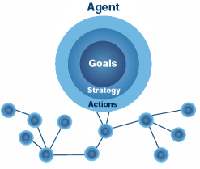 One of the most contemporary, dynamic, promising and yet somewhat alarming developments in information technology is the advent of agent technology. “An agent is a computer system capable of flexible autonomous action in a dynamic, unpredictable and open environment” (Luck, McBurney & Preist, 2003, p. 8). Agent technology is considered the foundation for next generation technology. One of the most contemporary, dynamic, promising and yet somewhat alarming developments in information technology is the advent of agent technology. “An agent is a computer system capable of flexible autonomous action in a dynamic, unpredictable and open environment” (Luck, McBurney & Preist, 2003, p. 8). Agent technology is considered the foundation for next generation technology.
“As the computing landscape moves from a focus on the individual, stand alone computer system to a situation in which the real power of computers is realised through distributed, open and dynamic systems, we are faced with new technological challenges and new opportunities. The characteristics of dynamic and open environments in which, for example, heterogeneous systems must
interact, span organizational boundaries, and operate effectively within rapidly changing circumstances and with dramatically increasing quantities of available information, suggest that improvements on the traditional computing models and paradigms are required. In particular, the need for some degree of autonomy, to enable components to respond dynamically to changing circumstances while trying to achieve over-arching objectives, is seen by many as fundamental” (Luck et al, 2003, p. 9).

Figure 3: Agent Technology within Context
Autonomy is one characteristic that needs to be considered carefully when designing agent technologies. Chalupsky, Gil, Knoblock, Lerman, Oh, Pynadath, Russ. & Tambe (2001) described a sophisticated group of agent technologies they created called the Electric Elves, that services the Intelligence Systems Division in their workplace, which consisted of “a system of about 15 agents, including nine proxies for nine people, plus two different matchmakers, one flight tracker and one scheduler running continuously” (p.1).  “In the process of building the applications... we addressed a number of key technology problems that arise in any agent-based system applied to human organizations. In particular we described how to use Markov Decision Processes to determine the appropriate degree of autonomy for the agents, how to use knowledge-based matchmaking to assign tasks within an organization, how to apply machine learning techniques to ensure robust access to the data sources, how to combine knowledge-based and statistical matchmaking techniques to derive knowledge about the participants both within and outside an organization, and how to apply multi-agent teamwork coordination to dynamically assemble teams” (p. 10). “In the process of building the applications... we addressed a number of key technology problems that arise in any agent-based system applied to human organizations. In particular we described how to use Markov Decision Processes to determine the appropriate degree of autonomy for the agents, how to use knowledge-based matchmaking to assign tasks within an organization, how to apply machine learning techniques to ensure robust access to the data sources, how to combine knowledge-based and statistical matchmaking techniques to derive knowledge about the participants both within and outside an organization, and how to apply multi-agent teamwork coordination to dynamically assemble teams” (p. 10).
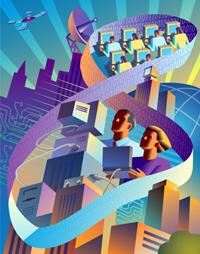 The Electric Elf proxy agent acted like a personal assistant, always aware of the assigned human's location using a Global Positioning System (GPS), their calendar and other information sources. The agent could perform routine duties such as scheduling meetings, give reminders about appointments and events, communicate with other humans on the user's behalf by email, wireless messaging or faxes, and so on. “When a proxy agent notices that someone is not attending a scheduled meeting or that they are located too far away to make it to a scheduled meeting in time, then their agent sends them a request using a wireless device asking if they want to cancel the meeting, delay the meeting, or have the meeting proceed without them. If a user responds, their decision is then communicated to the other participants of the scheduled meeting. If they are unable to respond, the agent must make a decision autonomously” (Chalupsky et al, 2001, p. 2). The Electric Elf proxy agent acted like a personal assistant, always aware of the assigned human's location using a Global Positioning System (GPS), their calendar and other information sources. The agent could perform routine duties such as scheduling meetings, give reminders about appointments and events, communicate with other humans on the user's behalf by email, wireless messaging or faxes, and so on. “When a proxy agent notices that someone is not attending a scheduled meeting or that they are located too far away to make it to a scheduled meeting in time, then their agent sends them a request using a wireless device asking if they want to cancel the meeting, delay the meeting, or have the meeting proceed without them. If a user responds, their decision is then communicated to the other participants of the scheduled meeting. If they are unable to respond, the agent must make a decision autonomously” (Chalupsky et al, 2001, p. 2).
 Chalupsky et al. (2001) described the agents as “...autonomous, heterogeneous, and distributed over a variety of platforms and research groups. Yet, these diverse agents must work together to accomplish the complex tasks required by Electric Elves. By interfacing with Teamcore proxies, existing agents become team-ready and thus able to rapidly assemble themselves into a team to solve a given problem” (p.7). Although this type of sophisticated technology is still a fantasy in health care, it already exists and will likely be part of the health care landscape within the next few years. Their Chalupsky et al. (2001) described the agents as “...autonomous, heterogeneous, and distributed over a variety of platforms and research groups. Yet, these diverse agents must work together to accomplish the complex tasks required by Electric Elves. By interfacing with Teamcore proxies, existing agents become team-ready and thus able to rapidly assemble themselves into a team to solve a given problem” (p.7). Although this type of sophisticated technology is still a fantasy in health care, it already exists and will likely be part of the health care landscape within the next few years. Their  efficiency, ability to attend to redundant tasks, and the various ways they can support organizational functioning will make them too valuable to ignore for long. “Our agents go beyond simply automating tasks that were previously performed by humans. Because hardware and processing power is cheap, our agents can perform a level of monitoring that would be impractical for human assistants, ensuring that activities within an organization runs smoothly and that events are planned and coordinated to maximize the productivity of the individuals in the organization” (p. 10). Agent technology “...enable the aggregation of different functionalities that have previously been distinct (such as planning, learning, coordination, etc. ) in a conceptually embodied and situated whole” (Luck et al. 2003, p. 9). efficiency, ability to attend to redundant tasks, and the various ways they can support organizational functioning will make them too valuable to ignore for long. “Our agents go beyond simply automating tasks that were previously performed by humans. Because hardware and processing power is cheap, our agents can perform a level of monitoring that would be impractical for human assistants, ensuring that activities within an organization runs smoothly and that events are planned and coordinated to maximize the productivity of the individuals in the organization” (p. 10). Agent technology “...enable the aggregation of different functionalities that have previously been distinct (such as planning, learning, coordination, etc. ) in a conceptually embodied and situated whole” (Luck et al. 2003, p. 9).
This radical new wave of information technology demands new ways of thinking of technology in the context of nursing. Since agents are “autonomous entities capable of exercising choice over their actions and interactions” (Luck et al. 2003, p. 17), the complexities of applying agent technology to nursing poses both promise and threat. Promise in the fact that these technologies could potentially perform many of the mundane duties that keep nurses occupied in operational 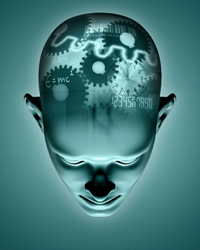 procedures that maintain the organizational system but detract from potential time spent in meaningful exchanges with clients. But they also pose a threat in other ways: their ability to exercise choice and interact could be relied on as a reliable decision making source that could deter nurses from providing individualized care. They also could present the threat of potentially replacing humans in the workplace. Agent technology in nursing could provide many benefits, but as with all technologies, nurses would need to be involved in their design, in the choice of their assigned applications, and retain control of any actions that directly impact on providing individualized client care. procedures that maintain the organizational system but detract from potential time spent in meaningful exchanges with clients. But they also pose a threat in other ways: their ability to exercise choice and interact could be relied on as a reliable decision making source that could deter nurses from providing individualized care. They also could present the threat of potentially replacing humans in the workplace. Agent technology in nursing could provide many benefits, but as with all technologies, nurses would need to be involved in their design, in the choice of their assigned applications, and retain control of any actions that directly impact on providing individualized client care.
Nurses and technologies interact to form actor networks within the workplace arena. New technologies are also used to facilitate networks between nurses and other health care professionals. These networks manifest as virtual nursing and interdisciplinary work teams, interest groups, communities of practice, and other collaborative configurations.
|
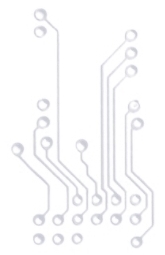
|




 Human – computer interactions occur within sociocultural and sociostructural contexts, a notion that has sparked research and theory that strives to account for the social role of technology within the workplace and other arenas of society (Bandura, 2002). “Informatics is contextual by nature, entangled with the work done to gather it. There is a co-evolution of the environment and the system, the technology, work and clinicians are interwoven agents of change. Technology is physically constructed by actors working in a given social context” (Kaplan, 2001, p. 47). Some theorists view technologies as having agency (the capacity to make a difference) as they are acted upon by humans within the workplace or other social milieu. Others theorize that technologies gain agency
Human – computer interactions occur within sociocultural and sociostructural contexts, a notion that has sparked research and theory that strives to account for the social role of technology within the workplace and other arenas of society (Bandura, 2002). “Informatics is contextual by nature, entangled with the work done to gather it. There is a co-evolution of the environment and the system, the technology, work and clinicians are interwoven agents of change. Technology is physically constructed by actors working in a given social context” (Kaplan, 2001, p. 47). Some theorists view technologies as having agency (the capacity to make a difference) as they are acted upon by humans within the workplace or other social milieu. Others theorize that technologies gain agency in their own right, which is constituted as a non-human agent within the social landscape. “Technologies, like people, are now conceived of as having agency, biographies, lives, lifecourses, histories, language, idiosyncratic quirks, inclinations, and known propensities for perverse or benign behavior” (Barnard & Sandelowski, 2001, p. 368). This type of theorizing has led to perspectives such as actor-network theory, diagnostic and therapeutic agency, and agent technology. Each of these perspectives influence the shaping of nursing informatics and have current as well as future implications for the profession of nursing and the provision of nursing care.
in their own right, which is constituted as a non-human agent within the social landscape. “Technologies, like people, are now conceived of as having agency, biographies, lives, lifecourses, histories, language, idiosyncratic quirks, inclinations, and known propensities for perverse or benign behavior” (Barnard & Sandelowski, 2001, p. 368). This type of theorizing has led to perspectives such as actor-network theory, diagnostic and therapeutic agency, and agent technology. Each of these perspectives influence the shaping of nursing informatics and have current as well as future implications for the profession of nursing and the provision of nursing care.  Technology influences, and is influenced by, the sociostructural nature of societies” (Bandura, 2002, p. 2). Advances in technology have catalyzed a shift from the industrial to the information age and birthed our current knowledge-based global society, at least in western capitalistic society. To adapt to this shift, human agency has accepted the need for continual self-development and self-renewal, often through the context of lifelong learning. Key to this renewal is the promise of new technologies which bring knowledge to the fingertips of any human who has access to a computer and the Internet. In this context, the characteristics of access and the promise of knowledge gives technology agency, in that it can and does make a difference in people's (including nurses) lives on a number of levels.
Technology influences, and is influenced by, the sociostructural nature of societies” (Bandura, 2002, p. 2). Advances in technology have catalyzed a shift from the industrial to the information age and birthed our current knowledge-based global society, at least in western capitalistic society. To adapt to this shift, human agency has accepted the need for continual self-development and self-renewal, often through the context of lifelong learning. Key to this renewal is the promise of new technologies which bring knowledge to the fingertips of any human who has access to a computer and the Internet. In this context, the characteristics of access and the promise of knowledge gives technology agency, in that it can and does make a difference in people's (including nurses) lives on a number of levels.
 The question of whether technology has agency has been the focus of social research for at least three decades. According to structuration theory, only humans have agency while technologies are simply allocative resources that influence society only when they are incorporated in structuration processes (Giddens, 1984). Giddens theorized that only human actors had agency or transformative capacity, which was closely connected with a sense of power, manifested as an exploitation of resources. “Resources....are structured properties of social systems, drawn on and reproduced by knowledgeable agents in the course of interaction” (p.15). Thus, technologies possess structural properties which serve and are used by human agents as resources in social practices.
The question of whether technology has agency has been the focus of social research for at least three decades. According to structuration theory, only humans have agency while technologies are simply allocative resources that influence society only when they are incorporated in structuration processes (Giddens, 1984). Giddens theorized that only human actors had agency or transformative capacity, which was closely connected with a sense of power, manifested as an exploitation of resources. “Resources....are structured properties of social systems, drawn on and reproduced by knowledgeable agents in the course of interaction” (p.15). Thus, technologies possess structural properties which serve and are used by human agents as resources in social practices.  On the other hand, Bruno Latour (1987) coined the term 'actant' to describe the potential for agency in non-human artifacts. “While the status of material artifacts in Actor Network Theory is somewhat ambiguous, Latour's discussion of the agency of key fobs, door closers, and speed bumps (Latour, 1991) suggests a concept of agency that is not restricted to human actors” (Rose & Jones, 2005, p. 20). Latour viewed the intertwined actions that result when humans utilize technologies as a symmetrical network of actors that work together and influence each other: in essence, he seemed to view technologies and other material objects through the lens of hylozoism, where technology possesses the attributes of intentionality, will, purpose, and some sort of life of their own.
On the other hand, Bruno Latour (1987) coined the term 'actant' to describe the potential for agency in non-human artifacts. “While the status of material artifacts in Actor Network Theory is somewhat ambiguous, Latour's discussion of the agency of key fobs, door closers, and speed bumps (Latour, 1991) suggests a concept of agency that is not restricted to human actors” (Rose & Jones, 2005, p. 20). Latour viewed the intertwined actions that result when humans utilize technologies as a symmetrical network of actors that work together and influence each other: in essence, he seemed to view technologies and other material objects through the lens of hylozoism, where technology possesses the attributes of intentionality, will, purpose, and some sort of life of their own.  “It is the extent to which humans behave 'as if' machines had autonomy and intentionality that is significant in understanding the interactions of humans and machines, rather than some objectively determined agency (even if this could be established). Moreover, as machines become more complex, their perceived autonomy increases. The mutual transformation of human and machine agency that emerges through their interplay, influences social practice through changes in the perceptions of social actors. Human agents have purposes and forms of awareness that machines do not. The two kinds of agency are not separate, but intertwined, and their consequences emergent” (Rose & Jones, 2005, p. 27).
“It is the extent to which humans behave 'as if' machines had autonomy and intentionality that is significant in understanding the interactions of humans and machines, rather than some objectively determined agency (even if this could be established). Moreover, as machines become more complex, their perceived autonomy increases. The mutual transformation of human and machine agency that emerges through their interplay, influences social practice through changes in the perceptions of social actors. Human agents have purposes and forms of awareness that machines do not. The two kinds of agency are not separate, but intertwined, and their consequences emergent” (Rose & Jones, 2005, p. 27).  A key tenet of actor-network theory is the acknowledgment of the importance of situated context. Nurses and technology interact within the context of bureaucratic health care, often in the presence of their clients or other health professionals. These interactions culminate in “emergent networks that make work practices function smoothly” (Kaplan, 2001, p. 47) within “...dynamic, emergent processes, [where] causality is multi-directional” (p. 48). “In contemporary social studies of science and technology, the actor-network view of humans and nonhumans as analytically (as opposed to morally) similar, and its emphasis on acts, not actors, contrasts with dualistic and deterministic accounts of technology as alien to human beings and as stable causes of effects.
A key tenet of actor-network theory is the acknowledgment of the importance of situated context. Nurses and technology interact within the context of bureaucratic health care, often in the presence of their clients or other health professionals. These interactions culminate in “emergent networks that make work practices function smoothly” (Kaplan, 2001, p. 47) within “...dynamic, emergent processes, [where] causality is multi-directional” (p. 48). “In contemporary social studies of science and technology, the actor-network view of humans and nonhumans as analytically (as opposed to morally) similar, and its emphasis on acts, not actors, contrasts with dualistic and deterministic accounts of technology as alien to human beings and as stable causes of effects.  Technologies, like people, simultaneously act, but are also 'acted upon'” (Barnard & Sandelowski, 2001, p. 369) where “...machines, tools, procedures, and protocols are agents of use and are physically and philosophically independent of human action and choice” (Barnard, 1997, p. 127).
This particular perspective of informatics presents technology as a critical actor within the social context of the health system, an actor that “cannot be understood without examining contextual factors relevant to the particular society, such as gender, class, economics, culture or race. Within this context, a series of historical actors with an investment in the system make choices about the function, form, or use of a particular technology, and these choices themselves reflect the social context” (Fairman & D'Antonio, 1999, p. 180). “When machines act they can be seen as tools (where they act directly under the control of humans to amplify their capacity to make a difference), as proxies (where they replace humans and act in their stead), or as automata (where they take over some (usually minor) part of human decision making as well as the power to act). Modern organizational computer systems can serve all three functions” (Rose & Jones, 2005, p. 28).
Technologies, like people, simultaneously act, but are also 'acted upon'” (Barnard & Sandelowski, 2001, p. 369) where “...machines, tools, procedures, and protocols are agents of use and are physically and philosophically independent of human action and choice” (Barnard, 1997, p. 127).
This particular perspective of informatics presents technology as a critical actor within the social context of the health system, an actor that “cannot be understood without examining contextual factors relevant to the particular society, such as gender, class, economics, culture or race. Within this context, a series of historical actors with an investment in the system make choices about the function, form, or use of a particular technology, and these choices themselves reflect the social context” (Fairman & D'Antonio, 1999, p. 180). “When machines act they can be seen as tools (where they act directly under the control of humans to amplify their capacity to make a difference), as proxies (where they replace humans and act in their stead), or as automata (where they take over some (usually minor) part of human decision making as well as the power to act). Modern organizational computer systems can serve all three functions” (Rose & Jones, 2005, p. 28).
 Technologies in nursing are often used for either diagnostic or therapeutic purposes. If one looks at these activities through the lens of agency, these instruments prove to be more than mere tools or objects that promote efficiency and reduce human error. They become both actor in the form of helping the nurse gather diagnostic data, such as a client's vital signs, and symbols that represent the work that nurses perform in practice. “The potential and power of a technological device to shape an interaction is not pregiven but is realised in practice, e.g. A stethoscope is an instrument of diagnosis, an extension of the ear, a symbol of science, and a bid to a higher social status” (Barnard & Sandelowski, 2001, p. 369).
Technologies in nursing are often used for either diagnostic or therapeutic purposes. If one looks at these activities through the lens of agency, these instruments prove to be more than mere tools or objects that promote efficiency and reduce human error. They become both actor in the form of helping the nurse gather diagnostic data, such as a client's vital signs, and symbols that represent the work that nurses perform in practice. “The potential and power of a technological device to shape an interaction is not pregiven but is realised in practice, e.g. A stethoscope is an instrument of diagnosis, an extension of the ear, a symbol of science, and a bid to a higher social status” (Barnard & Sandelowski, 2001, p. 369).  It is in the pathic and caring use of such instruments, that nursing engages the client within the network formed by nurse and technology (in this case, the stethoscope). Through the agency of the stethoscope, deep invisible activity (pulse, respiration rate and rhythm, bowel sounds, and so on) within the client are revealed, measured, and recorded.
It is in the pathic and caring use of such instruments, that nursing engages the client within the network formed by nurse and technology (in this case, the stethoscope). Through the agency of the stethoscope, deep invisible activity (pulse, respiration rate and rhythm, bowel sounds, and so on) within the client are revealed, measured, and recorded.  Xrays, etc. offer visual objectification of the body and often sustained patient's subjectivity by helping them to legitimate their suffering. By offering these patients, who had nothing to show for their pain, visual proof of its cause, visual technologies conferred them the power of the visible in a culture that increasingly defines the real as the seen” (Barnard & Sandelowski, 2001, p. 370). Even in end of life situations, technology can be viewed as exhibiting therapeutic agency. “Resuscitation technology served as a cultural ritual facilitating the passage from life to death. By providing an opportunity to prepare for impending death, the technology naturalized and dignified death” (Barnard & Sandelowski, 2001, p. 371).
Xrays, etc. offer visual objectification of the body and often sustained patient's subjectivity by helping them to legitimate their suffering. By offering these patients, who had nothing to show for their pain, visual proof of its cause, visual technologies conferred them the power of the visible in a culture that increasingly defines the real as the seen” (Barnard & Sandelowski, 2001, p. 370). Even in end of life situations, technology can be viewed as exhibiting therapeutic agency. “Resuscitation technology served as a cultural ritual facilitating the passage from life to death. By providing an opportunity to prepare for impending death, the technology naturalized and dignified death” (Barnard & Sandelowski, 2001, p. 371).  Although physical connection is absent, the nurse is able to visualize and communicate with the client, and suggest diagnostic and therapeutic activities through the means of sophisticated ICTs. “The resurrection of the fleshy body in nursing, the simultaneous transformation of the body into information, and the new turn in medicine and nursing toward encountering patients in virtual environments of care challenge nurses once again to address the tension between touch-body and technology-information as paradigms for nursing care and the paradox of visibility that advances in technologically - enhanced visibility pose for nursing” (Sandelowski, 2002, p. 63). Instead of communicating directly through their bodies and utilizing the common practices of touch, proximity and human contact to engage with the client, the nurse must transpose their presence, empathy and professionalism through the circuitry and visual displays of the ICT machine. The nurse is still present in a manner of speaking in this situation, and perceived as situated within the health care interaction by the client, albeit through electronic means.
Although physical connection is absent, the nurse is able to visualize and communicate with the client, and suggest diagnostic and therapeutic activities through the means of sophisticated ICTs. “The resurrection of the fleshy body in nursing, the simultaneous transformation of the body into information, and the new turn in medicine and nursing toward encountering patients in virtual environments of care challenge nurses once again to address the tension between touch-body and technology-information as paradigms for nursing care and the paradox of visibility that advances in technologically - enhanced visibility pose for nursing” (Sandelowski, 2002, p. 63). Instead of communicating directly through their bodies and utilizing the common practices of touch, proximity and human contact to engage with the client, the nurse must transpose their presence, empathy and professionalism through the circuitry and visual displays of the ICT machine. The nurse is still present in a manner of speaking in this situation, and perceived as situated within the health care interaction by the client, albeit through electronic means.  One of the most contemporary, dynamic, promising and yet somewhat alarming developments in information technology is the advent of agent technology. “An agent is a computer system capable of flexible autonomous action in a dynamic, unpredictable and open environment” (Luck, McBurney & Preist, 2003, p. 8). Agent technology is considered the foundation for next generation technology.
One of the most contemporary, dynamic, promising and yet somewhat alarming developments in information technology is the advent of agent technology. “An agent is a computer system capable of flexible autonomous action in a dynamic, unpredictable and open environment” (Luck, McBurney & Preist, 2003, p. 8). Agent technology is considered the foundation for next generation technology. 
 “In the process of building the applications... we addressed a number of key technology problems that arise in any agent-based system applied to human organizations. In particular we described how to use Markov Decision Processes to determine the appropriate degree of autonomy for the agents, how to use knowledge-based matchmaking to assign tasks within an organization, how to apply machine learning techniques to ensure robust access to the data sources, how to combine knowledge-based and statistical matchmaking techniques to derive knowledge about the participants both within and outside an organization, and how to apply multi-agent teamwork coordination to dynamically assemble teams” (p. 10).
“In the process of building the applications... we addressed a number of key technology problems that arise in any agent-based system applied to human organizations. In particular we described how to use Markov Decision Processes to determine the appropriate degree of autonomy for the agents, how to use knowledge-based matchmaking to assign tasks within an organization, how to apply machine learning techniques to ensure robust access to the data sources, how to combine knowledge-based and statistical matchmaking techniques to derive knowledge about the participants both within and outside an organization, and how to apply multi-agent teamwork coordination to dynamically assemble teams” (p. 10). The Electric Elf proxy agent acted like a personal assistant, always aware of the assigned human's location using a Global Positioning System (GPS), their calendar and other information sources. The agent could perform routine duties such as scheduling meetings, give reminders about appointments and events, communicate with other humans on the user's behalf by email, wireless messaging or faxes, and so on. “When a proxy agent notices that someone is not attending a scheduled meeting or that they are located too far away to make it to a scheduled meeting in time, then their agent sends them a request using a wireless device asking if they want to cancel the meeting, delay the meeting, or have the meeting proceed without them. If a user responds, their decision is then communicated to the other participants of the scheduled meeting. If they are unable to respond, the agent must make a decision autonomously” (Chalupsky et al, 2001, p. 2).
The Electric Elf proxy agent acted like a personal assistant, always aware of the assigned human's location using a Global Positioning System (GPS), their calendar and other information sources. The agent could perform routine duties such as scheduling meetings, give reminders about appointments and events, communicate with other humans on the user's behalf by email, wireless messaging or faxes, and so on. “When a proxy agent notices that someone is not attending a scheduled meeting or that they are located too far away to make it to a scheduled meeting in time, then their agent sends them a request using a wireless device asking if they want to cancel the meeting, delay the meeting, or have the meeting proceed without them. If a user responds, their decision is then communicated to the other participants of the scheduled meeting. If they are unable to respond, the agent must make a decision autonomously” (Chalupsky et al, 2001, p. 2). Chalupsky et al. (2001) described the agents as “...autonomous, heterogeneous, and distributed over a variety of platforms and research groups. Yet, these diverse agents must work together to accomplish the complex tasks required by Electric Elves. By interfacing with Teamcore proxies, existing agents become team-ready and thus able to rapidly assemble themselves into a team to solve a given problem” (p.7). Although this type of sophisticated technology is still a fantasy in health care, it already exists and will likely be part of the health care landscape within the next few years. Their
Chalupsky et al. (2001) described the agents as “...autonomous, heterogeneous, and distributed over a variety of platforms and research groups. Yet, these diverse agents must work together to accomplish the complex tasks required by Electric Elves. By interfacing with Teamcore proxies, existing agents become team-ready and thus able to rapidly assemble themselves into a team to solve a given problem” (p.7). Although this type of sophisticated technology is still a fantasy in health care, it already exists and will likely be part of the health care landscape within the next few years. Their  efficiency, ability to attend to redundant tasks, and the various ways they can support organizational functioning will make them too valuable to ignore for long. “Our agents go beyond simply automating tasks that were previously performed by humans. Because hardware and processing power is cheap, our agents can perform a level of monitoring that would be impractical for human assistants, ensuring that activities within an organization runs smoothly and that events are planned and coordinated to maximize the productivity of the individuals in the organization” (p. 10). Agent technology “...enable the aggregation of different functionalities that have previously been distinct (such as planning, learning, coordination, etc. ) in a conceptually embodied and situated whole” (Luck et al. 2003, p. 9).
efficiency, ability to attend to redundant tasks, and the various ways they can support organizational functioning will make them too valuable to ignore for long. “Our agents go beyond simply automating tasks that were previously performed by humans. Because hardware and processing power is cheap, our agents can perform a level of monitoring that would be impractical for human assistants, ensuring that activities within an organization runs smoothly and that events are planned and coordinated to maximize the productivity of the individuals in the organization” (p. 10). Agent technology “...enable the aggregation of different functionalities that have previously been distinct (such as planning, learning, coordination, etc. ) in a conceptually embodied and situated whole” (Luck et al. 2003, p. 9).  procedures that maintain the organizational system but detract from potential time spent in meaningful exchanges with clients. But they also pose a threat in other ways: their ability to exercise choice and interact could be relied on as a reliable decision making source that could deter nurses from providing individualized care. They also could present the threat of potentially replacing humans in the workplace. Agent technology in nursing could provide many benefits, but as with all technologies, nurses would need to be involved in their design, in the choice of their assigned applications, and retain control of any actions that directly impact on providing individualized client care.
procedures that maintain the organizational system but detract from potential time spent in meaningful exchanges with clients. But they also pose a threat in other ways: their ability to exercise choice and interact could be relied on as a reliable decision making source that could deter nurses from providing individualized care. They also could present the threat of potentially replacing humans in the workplace. Agent technology in nursing could provide many benefits, but as with all technologies, nurses would need to be involved in their design, in the choice of their assigned applications, and retain control of any actions that directly impact on providing individualized client care.